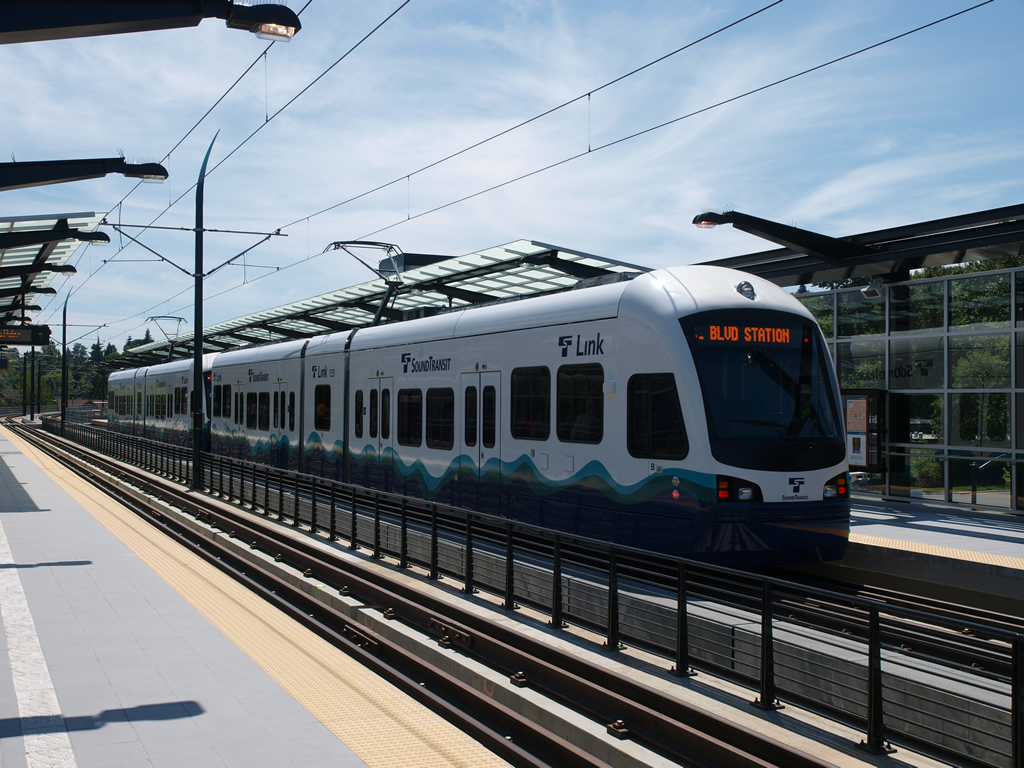Editor’s Note: Today, Sound Transit is concluding the comment period for the first phase of early scoping on the Ballard and West Seattle Link light rail extensions, which were authorized by voters in 2016 with their yes vote on Sound Transit 3. The following are the comments that NPI submitted to Sound Transit regarding issues we believe should be studied as part of the planning for each extension.
The Northwest Progressive Institute has strongly supported the construction of a regional mass transit system since our founding in 2003. We are headquartered in Redmond and work with organizations, stakeholders, and elected officials throughout the Pacific Northwest, particularly in the Puget Sound region.
We support construction of the Ballard and West Seattle lines as a crucial element of our region’s strategy to reduce emissions of pollutants like carbon dioxide, create good jobs, and address our transportation needs.
We request that Sound Transit prioritize the following issues in its studies of the rail lines to Ballard and to West Seattle: fast and frequent travel times, reliability, long-term system expansion, and promotion of sustainable urban development.
With regard to the Ballard line, NPI urges Sound Transit to closely study a West Interbay alternative to the representative alignment, that would run along 20th Avenue West, with a below-grade station at Dravus Street, and a tunnel under Salmon Bay to a terminus at the Ballard station, ideally located below-grade at or near the intersection of NW Market Street and 15th Avenue NW.
NPI shares the widespread concerns voiced by community members and stakeholders that the movable bridge over Salmon Bay included in the representative alignment presents an unacceptable risk to the reliability of passenger rail service. Even with a higher bridge than the current Ballard Bridge, the need to occasionally open the rail bridge would cause delays that would render passenger rail service unpredictable and hurt ridership levels.
By contrast, a tunnel under Salmon Bay would provide reliable service to train riders at all hours of the day. It would also minimize the impact to local businesses and homes. Sound Transit’s successful tunnel under the Montlake Cut provides an example of the feasibility and desirability of such a tunnel.
This tunnel would also align with a 20th Avenue West route through Interbay, which has the benefit of serving more homes and businesses without causing major disruptions to 15th Avenue West.
We also request that Sound Transit carry forward station designs in Ballard and in South Lake Union that enable easy expansion of the system.
In Ballard, those expansions could be to the north along 15th Avenue NW to Whittier Heights, Crown Hill, and Northgate, or to the east, serving parts of Fremont, Wallingford, and the University District.
At the South Lake Union station, we would want to enable future expansion northward along the Aurora Avenue corridor. This will allow the rail system to be expanded to serve future riders at a lower cost.
With regard to the West Seattle line, NPI believes the current representative alignment contains the right route and stop locations to carry forward.
Because the bridge over the Duwamish River is high enough to not require openings, and because of the grade profile challenges of a tunnel under the Duwamish (specifically the need to rise rapidly in order to reach Alaska Junction) we support the current fixed structure bridge proposal.
NPI also supports the current proposals for new stations at Delridge, Avalon, and Alaska Junction.
As with the Ballard line, we would like the Alaska Junction station to be designed to allow an easy expansion of the route southward to serve other neighborhoods in West Seattle, as well as Burien and other nearby communities. Again, this enables future transportation service to be designed and built at a lower cost.
NPI’s priorities for these two extensions are, in order, to maximize ridership on these routes by focusing on fast and reliable service; delivering projects faster than the currently projected dates of 2030 for West Seattle and 2035 for Ballard; and minimizing disruption to existing communities during construction, where possible.
Thank you for this opportunity to provide comment on these much-needed extensions of our regional light rail system.

